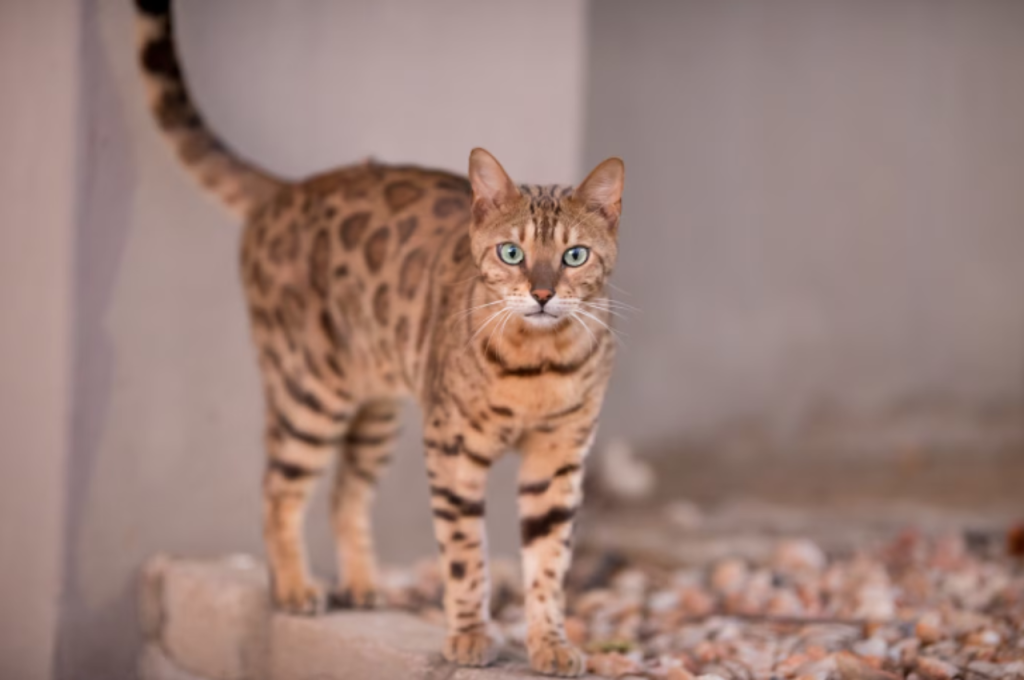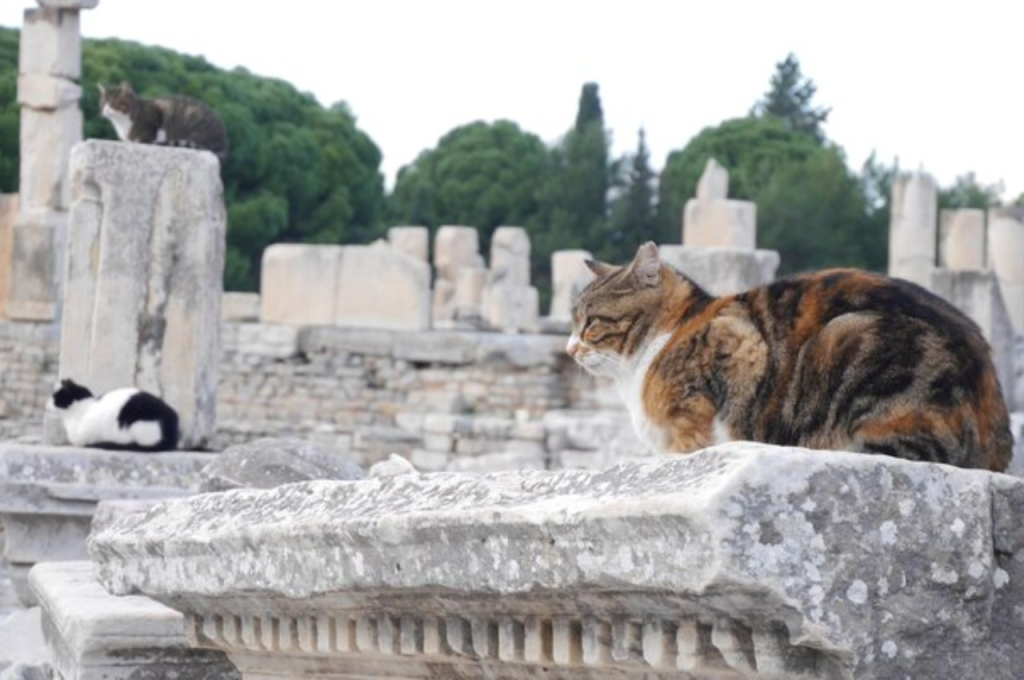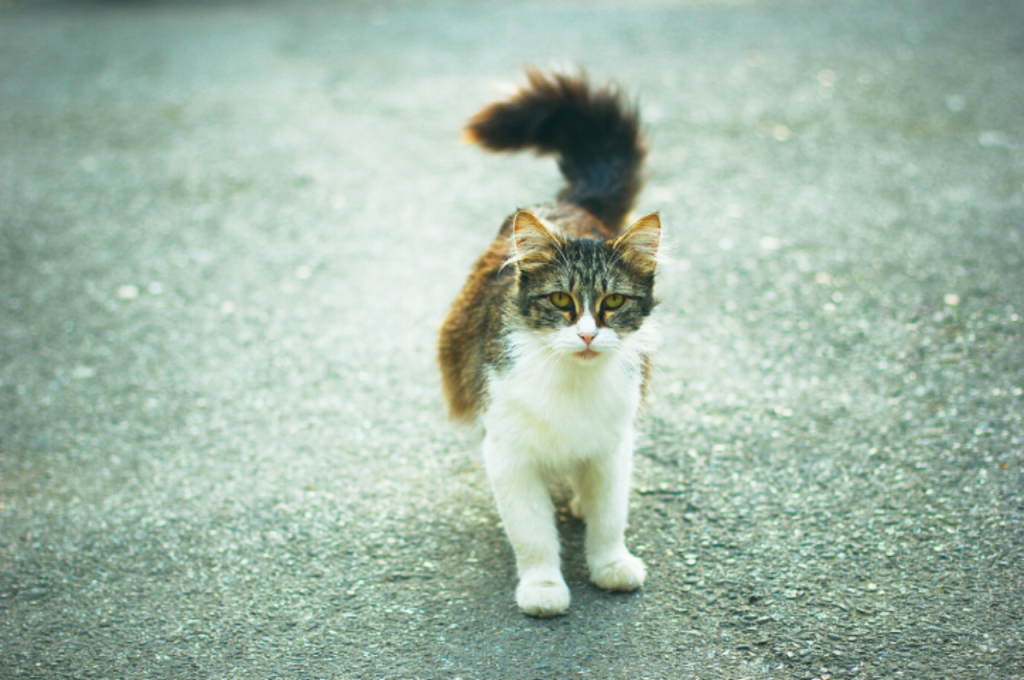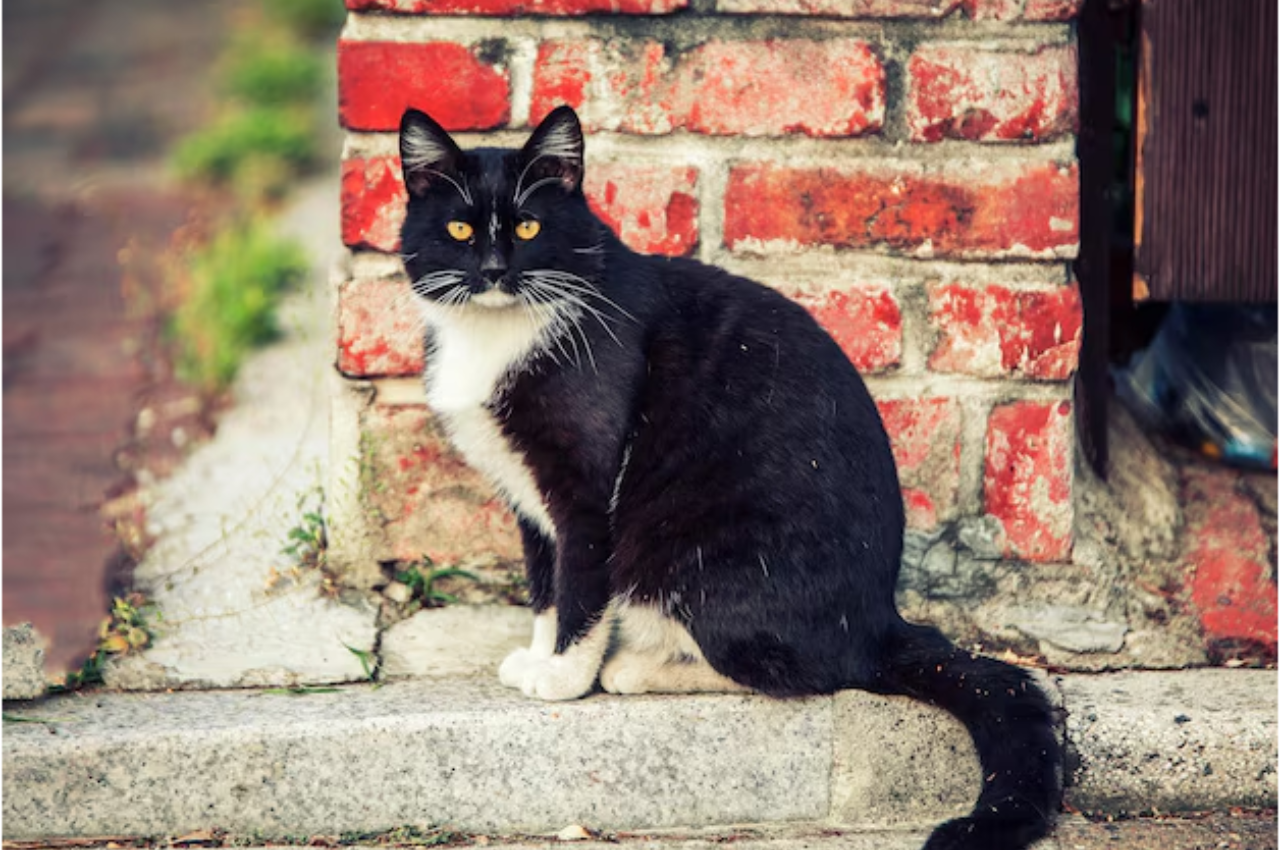Ancient myths about cats are abundant, but the truth behind them is often obscured. Cats have long been associated with superstitions and legends, leading to a variety of misconceptions.
However, it is important to separate fact from fiction when it comes to these fascinating creatures. In this blog post, we will debunk some of the most common myths about cats and explore the real truths behind them. By dispelling these misconceptions, we can gain a deeper understanding and appreciation for these enigmatic animals. So, let’s dive in and uncover the reality behind ancient myths about cats.
The Sacred Felines of Egypt
Ancient Egypt is renowned for its reverence of cats, which were elevated to the status of sacred creatures. These revered felines played a significant role in Egyptian mythology and everyday life. Let’s delve into the captivating world of the sacred felines of Egypt, where cats were both revered and feared.

Bastet: Goddess of Home and Hearth
Bastet, the feline deity, was revered as the goddess of home, hearth, and fertility. She was often depicted as a lioness or as a woman with the head of a lioness. Bastet symbolized domesticity, fertility, and protection. Ancient Egyptians believed that she guarded their homes from evil spirits and misfortune.
Protection and Punishment: The Dual Roles of Cats
Ancient Egyptians held cats in high esteem for their dual roles in providing protection and delivering punishment. Cats were believed to safeguard homes from vermin and evil spirits. Moreover, they were associated with the goddesses Bastet and Sekhmet, who were both protectors and punishers, embodying the duality of cats in Egyptian mythology.
Norse Legends: Freyja’s Chariot
Ancient Norse mythology is steeped in captivating tales of gods, goddesses, and their mystical companions. One such enchanting legend revolves around Freyja, the powerful goddess of love, fertility, and war, and her majestic chariot drawn by a pair of imposing felines. This mythical account of Freyja’s chariot and her feline allies offers a glimpse into the intriguing symbolism of cats in Norse mythology.
Freyja: The Love Goddess and Her Feline Companions
Freyja, the revered Norse goddess associated with love and beauty, is often depicted with her faithful feline companions by her side. Known for her benevolent nature and captivating allure, Freyja’s close bond with cats is a testament to their revered status in ancient Norse culture.
Symbolism of Cats in Norse Mythology
In Norse mythology, cats symbolize various attributes, including cunning, independence, and mystical prowess. Regarded as sacred creatures, cats were believed to embody the protective and nurturing qualities associated with Freyja, making them highly revered in ancient Norse society.
Cats in Witchcraft and Magic
Cats in Witchcraft and Magic have long been intertwined with ancient myths and folklore. From serving as feline familiars to being associated with supernatural powers, cats have played a significant role in various mystical beliefs and practices.
Feline Familiars: Beyond The Black Cat Stereotype
Across different cultures, cats have been regarded as feline familiars, spiritual companions to witches, and practitioners of magic. These mysterious creatures were believed to possess the ability to communicate with the spirit world and aid in casting spells and performing rituals.
Cats in European Folklore and Superstitions
In European folklore and superstitions, cats were often associated with both good and evil forces. While they were revered as guardians of homes and bringers of good luck, they were also linked to witchcraft and dark magic, leading to superstitions and cautionary tales surrounding their presence.
Japanese Maneki-Neko: The Beckoning Cat
The Japanese Maneki-Neko, also known as the Beckoning Cat, is a symbol of good luck and prosperity in Japanese culture.
Origins of The Lucky Cat
- Maneki-Neko originated in Japan during the Edo period.
- Believed to bring good fortune to its owners.
- Historically, it has been displayed in shops and homes for luck.
Maneki-neko Variations and Meanings
- Various colors and poses symbolize different types of luck.
- The right paw raised invites wealth, left paw raised attracts customers.
- Wearing a bib, collar, or coin symbolizes prosperity and protection.
The Enigmatic Cats of Ancient Rome
In ancient Rome, cats were revered for their mysterious aura and linked to various myths and legends. Believed to possess supernatural powers, these enigmatic felines were both feared and respected by the Romans.

Cats have always been fascinating creatures for humans, and ancient Rome is no exception. The Romans had a special place for cats in their society, where they were not only considered pets but also had a religious significance. The Romans believed that cats had the power to ward off evil spirits and bring good luck. In this blog post, we will explore the enigmatic cats of ancient Rome and their significance in Roman culture.
Cats and Goddess Diana: a Sacred Connection
According to Roman mythology, Goddess Diana, the goddess of the hunt, had a special affinity towards cats. She was often depicted in the company of cats, and it was believed that she could transform into a cat herself. This connection with the goddess made cats sacred in Roman culture, and they were often kept as temple cats in Diana’s temples.
Roman Beliefs and Practices Involving Cats
Apart from their religious significance, cats were also regarded as great hunters, and many Romans kept them as pets to control rodents. However, the Romans had some unusual beliefs and practices involving cats. For instance, they believed that a sneezing cat was a sign of good luck, and they would often perform rituals to ensure the cat sneezed. Additionally, it was believed that if a cat licked a person’s hair, they would have a headache, and if a cat sneezed three times in a row, it was a sign of an upcoming epidemic.
In conclusion, the enigmatic cats of ancient Rome had a significant role in Roman culture and mythology. They were not only kept as pets but also had a religious significance. The Romans had some unusual beliefs and practices involving cats, which shows their fascination and reverence for these enigmatic creatures.
Islamic Lore: The Revered Cats
Islamic lore has revered cats for centuries, with ancient myths depicting them as divine creatures. In Islamic culture, cats are believed to bring good luck and are often taken care of by mosques and households alike.
In Islamic lore, cats have a special place. They are revered for their beauty, grace, and cleanliness. Muslims around the world have always had a special bond with cats. Cats hold a significant place in Islamic culture and traditions. They are even mentioned in the Hadith, a collection of the sayings and actions of the Prophet Muhammad. Let’s explore the ancient myths about cats in Islamic lore, with a focus on the revered cat Muezza and the role of cats in Islamic culture and traditions.
Muhammad and The Cat Muezza
According to Islamic tradition, Prophet Muhammad had a special affection for cats. One story goes that the Prophet was once called to prayer, but he was wearing his favorite robe, which had Muezza, his beloved cat, sleeping on it. Rather than disturb Muezza, the Prophet cut off the sleeve of his robe and left the cat to sleep in peace. This story illustrates the high regard that the Prophet had for cats and how they were considered an important part of his life.
Cats in Islamic Culture and Traditions
Cats have always played an important role in Islamic culture and traditions. They are often depicted in Islamic art and literature, and many mosques have resident cats that are cared for by the community.
In Islamic countries, cats are often seen roaming the streets, and it is considered a good deed to feed and care for them. In Islamic mythology, cats are believed to have special powers. According to one story, a group of mice once went to the Prophet and asked for his help in dealing with a cat that was terrorizing them. The Prophet called the cat and asked it to leave the mice alone. The cat agreed, and from that day on, the mice and the cat lived in peace.
In conclusion, cats have played a significant role in Islamic lore for centuries. They are revered for their beauty, grace, and cleanliness, and are often depicted in Islamic art and literature. Cats are believed to have special powers and are considered an important part of Islamic culture and traditions. The story of Muezza and the Prophet Muhammad’s affection for cats is just one example of the high regard that Muslims have for these beloved animals.
Modern Interpretations of Ancient Cat Myths
Explore captivating modern interpretations of ancient cat myths, delving into the intriguing world of feline legends passed down through generations. Unravel the mystical tales surrounding these enigmatic creatures, shedding light on their symbolic significance in various cultures worldwide.
Throughout history, cats have been revered and feared, with ancient myths and legends attributing them with supernatural powers and abilities. In modern times, these myths have been reinterpreted in various ways, finding their way into contemporary media and literature. Today, we will explore the enduring legacy of feline mystique and how it has been adapted for modern audiences.
Cats in Contemporary Media and Literature
Cats have always been popular in literature and have made their way into modern-day media. From children’s books to horror movies, cats are often portrayed as mysterious and intelligent creatures.
One example is the popular musical, Cats, which features a group of singing and dancing felines. The characters are based on T.S. Eliot’s book, Old Possum’s Book of Practical Cats, which explores the personalities of different cats and their unique abilities. Another example is the animated movie, The Cat Returns, which tells the story of a young girl who is transported to a magical cat kingdom. The film is based on the Japanese folktale, The Cat’s Bride, and features a cast of whimsical and eccentric cats.
The Enduring Legacy of Feline Mystique
Despite the evolution of media and literature, the feline mystique remains a popular theme. The idea of cats possessing supernatural abilities and having a connection to the spiritual world continues to fascinate people. In fact, many people believe that cats have healing powers and that they can sense negative energy.

In conclusion, the myths and legends surrounding cats have been adapted for modern audiences, finding their way into literature and media. However, the enduring legacy of feline mystique remains, as people continue to be fascinated by these mysterious creatures. Whether you are a cat lover or not, the allure of the feline mystique is undeniable.
Frequently Asked Questions
Here are some commonly asked questions about ancient myths about Cats:
Are Black Cats Really Bad Luck?
No, black cats are not bad luck. This is just a myth that originated in medieval times. In reality, black cats are considered symbols of good luck in many cultures, and they make wonderful pets.
Can Cats Steal a Baby’s Breath?
No, cats cannot steal a baby’s breath. This is a common myth that has been debunked by experts. Cats are not capable of suffocating a baby, and it is important to provide a safe and supervised environment for both cats and infants.
Do Cats Have Nine Lives?
No, cats do not have nine lives. This is a myth that has been perpetuated in folklore and popular culture. Cats are resilient animals, but they only have one life, just like any other living creature.
Can Cats See in Complete Darkness?
While cats have excellent night vision, they cannot see in complete darkness. They have a specialized structure in their eyes called the tapetum lucidum, which enhances their ability to see in low light conditions, but some light is still necessary for them to see properly.
Conclusion
Explore the captivating world of ancient cat myths. Unraveling stories of mystery and magic. Cats are revered for their enigmatic nature throughout history. From Egypt to Greece, felines have left a lasting legacy. Delve into the enchanting lore of these majestic creatures, a timeless fascination for all.
